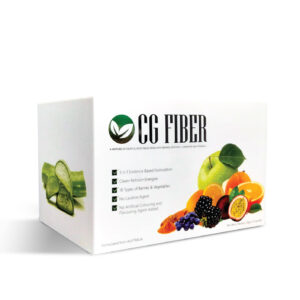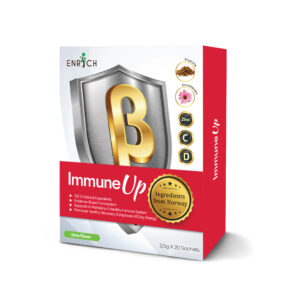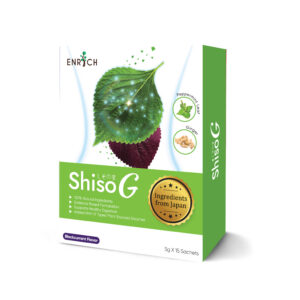Wellness
Low FODMAP diet for newbie
What is FODMAP
FODMAP stands for fermentable oligosaccharides, disaccharides, monosaccharides and polyols. They are a group of non-digestible short-chain carbohydrates that draws in more water into the digestive tract. Since they are non-digestible, gut bacteria ferment them creating more gas. This increased in fluid and gas in the bowel leads to symptoms such as bloating, gas, stomach pain, and altered bowel habits varying from constipation to diarrhea or a combination of both.
Who should follow low FODMAP diet?
Low FODMAP diet is a rather restrictive meal plan comprising of foods which are low in fermentable oligosaccharides, disaccharides, monosaccharides and polyols. It is not for everyone and certainly not a recommended method for weight loss. It is mainly recommended for people with irritable bowel syndrome (IBS) as research has shown improved IBS symptoms when they are put on low FODMAP diet. Though there are some hypotheses that the diet may benefit other gastrointestinal conditions including diverticulitis and exercise-induced digestive issues, more research is still needed to prove this hypothesis.
Step by step guide to follow a low FODMAP diet
Step 1: Restriction/ Substitution
This step in the low FODMAP diet involves the restriction of high FODMAP food consumption and replacing it with low FODMAP options. This step should only last for 2 – 6 weeks and once digestive symptoms has improved it is time to progress to the second step.
Step 2: Reintroduction
In addition to the low FODMAP diet as per step 1, this step includes a series of ‘FODMAP challenges’. This involves the reintroduction of a food rich in FODMAP back into the diet one at a time with a 3 days gap. During the 3 days reintroduction, it is important to note down how well you have tolerated with the FODMAP food.
This step is important to identify which types of FODMAPs you tolerate as few people are sensitive to all of them and to establish the amount of FODMAPs you can tolerate.
Step 3: Personalisation
In this step, you should be able to achieve a ‘personalised FODMAP diet’ for the long-term. As identified from step 2, the well tolerated foods can be added back into your diet, while poorly tolerated foods are restricted but only to a level that provides symptom relief. It is recommended to repeat challenges of poorly tolerated foods over time to see whether your tolerance changes.
It is advisable to undertake the low FODMAP diet with the guidance of a dietitian who can guide you through the appropriate foods and avoid unnecessary nutrition deficiencies due to the limited food choices.
Few examples of high FODMAP foods and its low FODMAP alternatives
| High FODMAP foods | Low FODMAP alternatives | |
| Breads and cereal products | Wheat/rye/barley-based breads, breakfast cereals, biscuits and snack products | Corn flakes, oats, quinoa flakes, quinoa/rice/corn pasta, plain rice cakes, sourdough spelt bread, wheat/rye/barley free breads |
| Protein sources | Most legumes/pulses, some marinated meats/poultry/seafood, some processed meats | Eggs, firm tofu, plain cooked meats/poultry/seafood, tempeh |
| Dairy | Cow’s milk, custard, evaporated milk, ice cream, soy milk (made from whole soybeans), sweetened condensed milk, yoghurt | Almond milk, brie/camembert cheese, feta cheese, hard cheeses, lactose-free milk, soy milk (made from soy protein) |
| Fruits | Apples, apple juice, cherries, dried fruit, mango, nectarines, peaches, pears, plums, watermelon | Cantaloupe, grapes, green kiwi, mandarin, orange, pineapple, strawberries |
| Vegetables | Artichoke, asparagus, cauliflower, garlic, green peas, mushrooms, onion, sugar snap peas | Eggplant, green bean, bok choy, capsicum, carrot, cucumber, lettuce, potato, tomato, zucchini |
| Sugars/ sweeteners & confectionary | High fructose corn syrup, honey, sugar free confectionery | Dark chocolate, maple syrup, rice malt syrup, table sugar |
| Nuts and seeds | Cashews, pistachios | Macadamias, peanuts, pumpkin seeds, walnuts |
It is important to remember that unlike in the case with food allergy where the food is completely avoided, people with IBS can sometimes still tolerate certain type of FODMAPs or small amounts of FODMAPs.
References:
- Staudacher HM, Irving PM, Lomer MC, Whelan K. Mechanisms and efficacy of dietary FODMAP restriction in IBS. Nature reviews Gastroenterology & hepatology. 2014 Apr;11(4):256-66.
- Nanayakkara WS, Skidmore PM, O’Brien L, Wilkinson TJ, Gearry RB. Efficacy of the low FODMAP diet for treating irritable bowel syndrome: the evidence to date. Clinical and experimental gastroenterology. 2016;9:131.
- Bellini M, Tonarelli S, Nagy AG, Pancetti A, Costa F, Ricchiuti A, de Bortoli N, Mosca M, Marchi S, Rossi A. Low FODMAP diet: Evidence, doubts, and hopes. Nutrients. 2020 Jan;12(1):148.
- Three step FODMAP Diet – Monash Fodmap [Internet]. Monashfodmap.com. 2022 [cited 18 March 2022]. Available from: https://www.monashfodmap.com/3_step_fodmap_diet/
Health Food
Ultimate Immune Booster
Health Food





It¦s actually a cool and helpful piece of info. I am happy that you just shared this helpful information with us. Please stay us informed like this. Thank you for sharing.
Attractive section of content. I just stumbled upon your web site and in accession capital to assert that I get in fact enjoyed account your blog posts. Any way I’ll be subscribing to your augment and even I achievement you access consistently quickly.
I’m still learning from you, but I’m improving myself. I absolutely liked reading everything that is posted on your site.Keep the stories coming. I loved it!
Enjoyed studying this, very good stuff, thanks.
Hello there! Do you know if they make any plugins to safeguard against hackers? I’m kinda paranoid about losing everything I’ve worked hard on. Any tips?
Lovely just what I was looking for.Thanks to the author for taking his clock time on this one.
Hello. remarkable job. I did not expect this. This is a splendid story. Thanks!
Unquestionably imagine that which you stated. Your favorite justification seemed to be at the net the simplest thing to take note of. I say to you, I certainly get irked whilst people consider worries that they plainly don’t recognise about. You managed to hit the nail upon the top and also outlined out the entire thing without having side-effects , people could take a signal. Will likely be again to get more. Thank you
wonderful post, very informative. I wonder why the other specialists of this sector do not understand this. You should continue your writing. I’m confident, you’ve a huge readers’ base already!
It’s hard to find knowledgeable people on this topic, but you sound like you know what you’re talking about! Thanks
I have recently started a website, the info you offer on this website has helped me greatly. Thanks for all of your time & work.
Hello there, I found your blog via Google while looking for a related topic, your web site came up, it looks great. I’ve bookmarked it in my google bookmarks.
You really make it seem so easy with your presentation but I find this matter to be really something which I think I would never understand. It seems too complex and very broad for me. I’m looking forward for your next post, I will try to get the hang of it!
Thanks for the good writeup. It in truth used to be a amusement account it. Glance complicated to far added agreeable from you! By the way, how could we be in contact?
Way cool, some valid points! I appreciate you making this article available, the rest of the site is also high quality. Have a fun.
I went over this web site and I believe you have a lot of superb information, saved to bookmarks (:.
You must take part in a contest for probably the greatest blogs on the web. I’ll recommend this website!
You could definitely see your enthusiasm in the work you write. The world hopes for even more passionate writers like you who are not afraid to say how they believe. Always go after your heart.
Undeniably consider that which you said. Your favorite reason appeared to be on the web the simplest thing to remember of. I say to you, I certainly get annoyed at the same time as other people consider worries that they plainly don’t recognize about. You managed to hit the nail upon the highest and also outlined out the whole thing without having side-effects , other folks can take a signal. Will likely be back to get more. Thanks